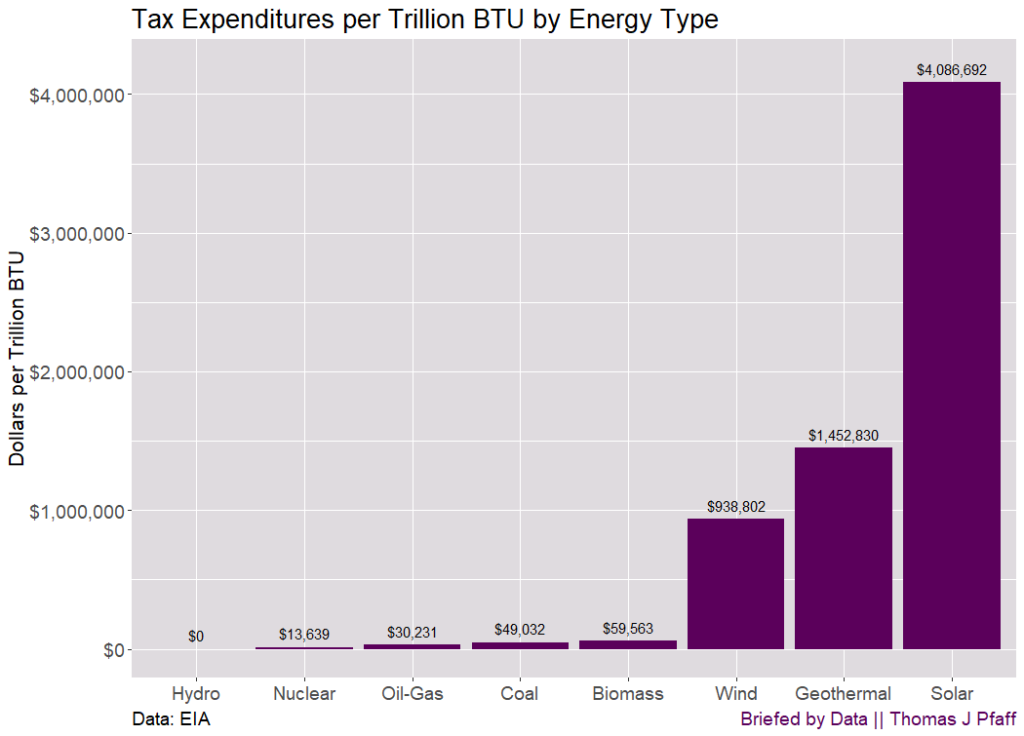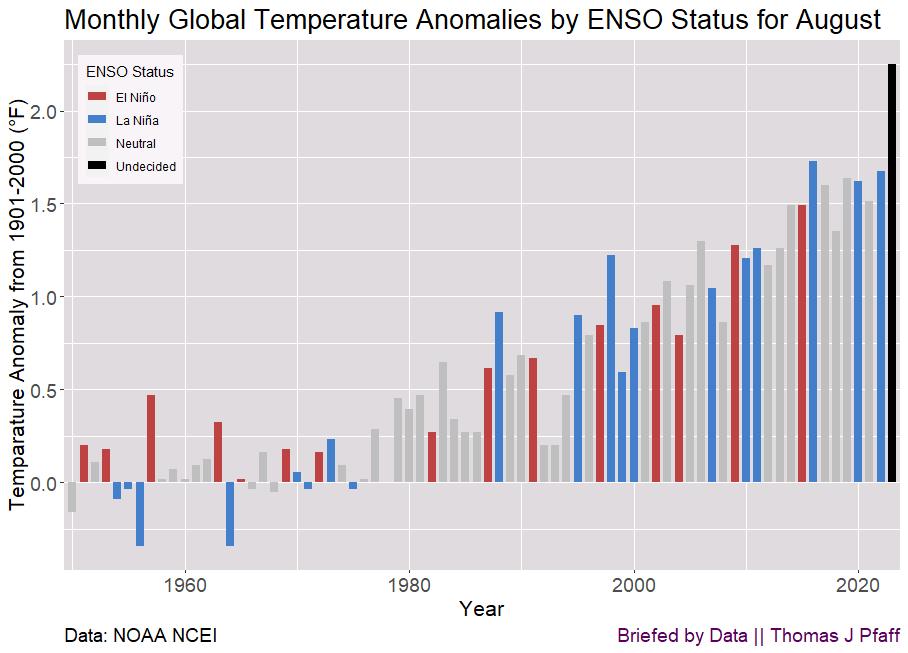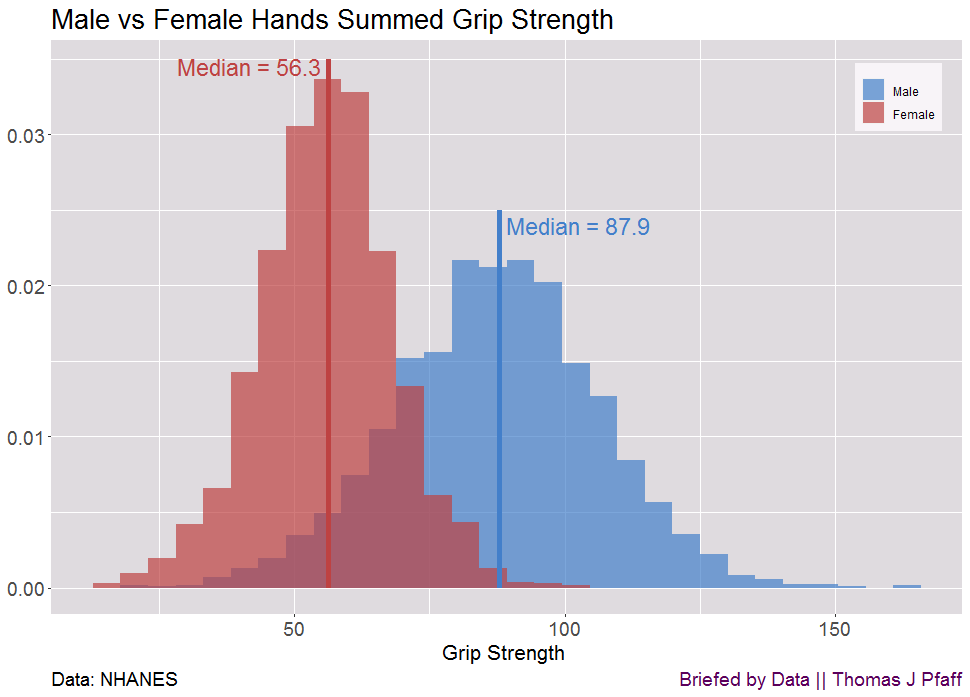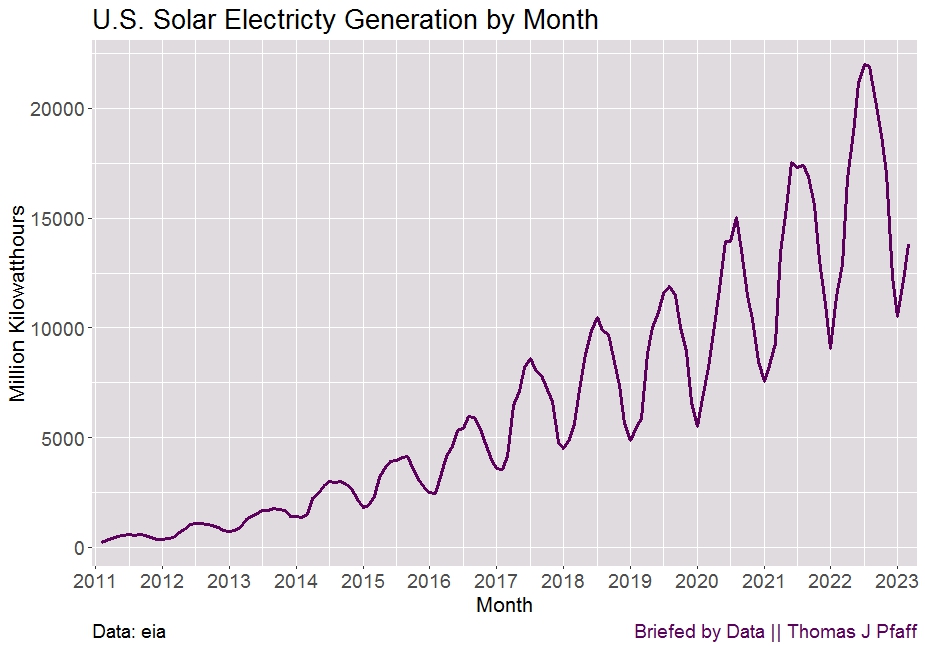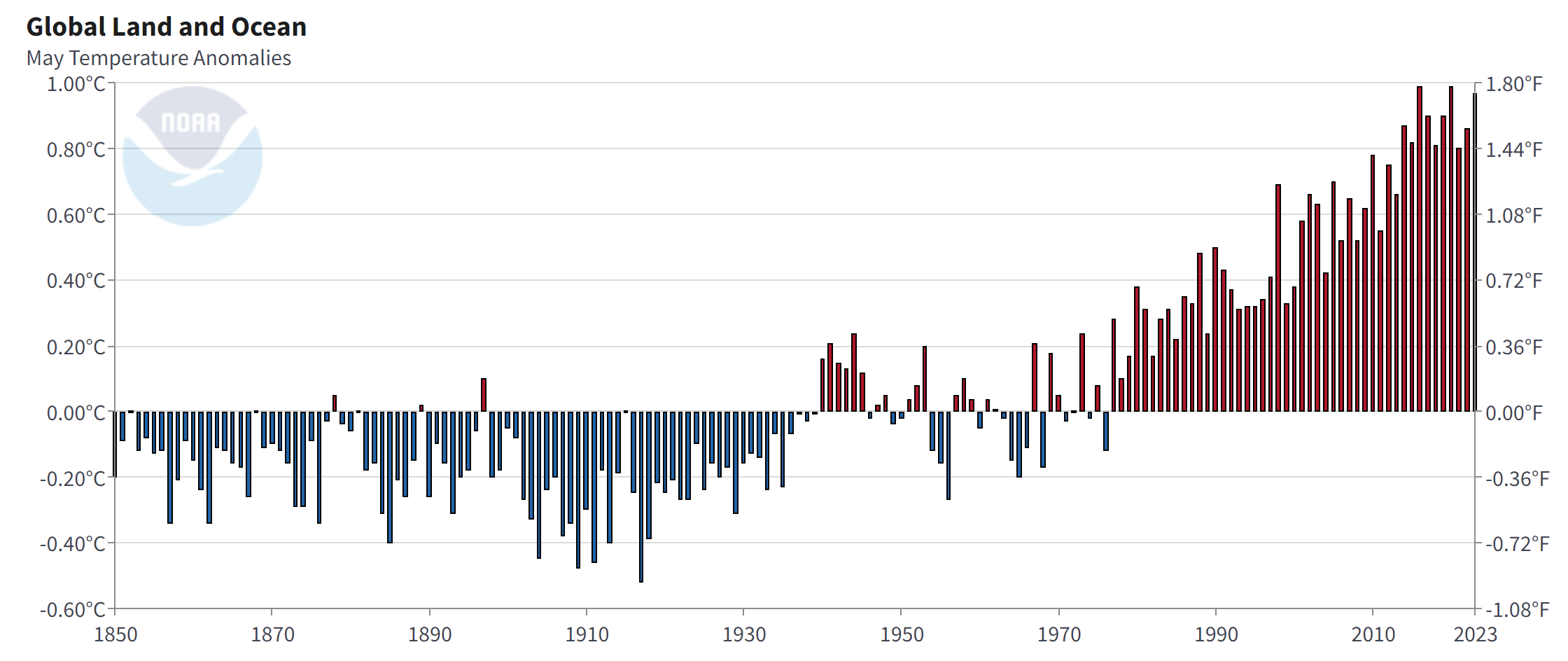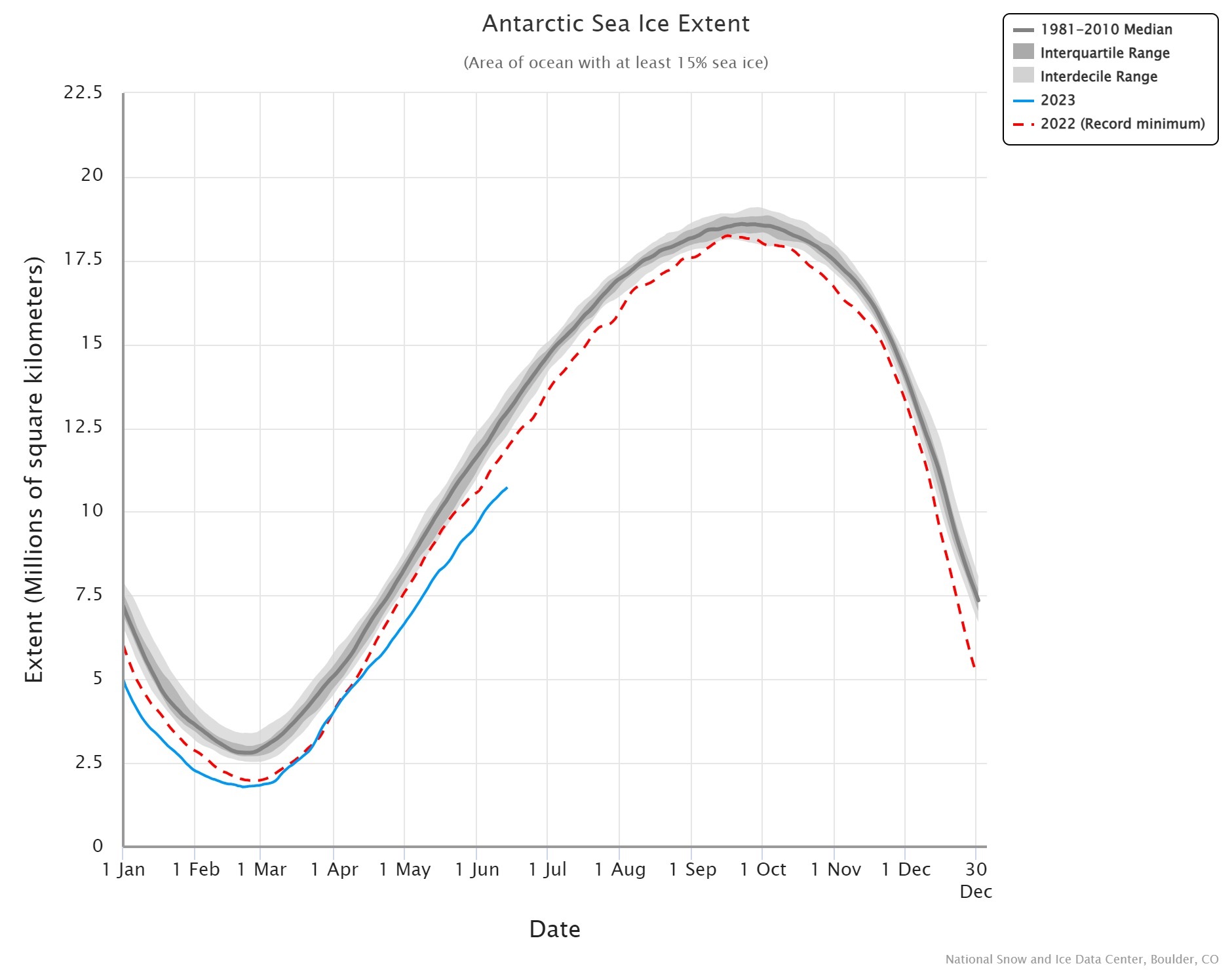The October temperature anomaly was a top-5 anomaly overall and a record for October, but this shouldn’t be surprising. If one follows the red bars and El Niño months, the 2023 anomaly follows that trend, and the expectation is that October 2023 will officially be an El Niño month. Expect more record monthly anomalies because (from NOAA)
El Niño conditions that emerged in June continued into October, and according to NOAA’s Climate Prediction Center there is an 80% chance that El Niño will continue through the Northern Hemisphere spring (March–May 2024).
NOAA has the time series data. More on this and other notes can be found in my Briefed by Data Quick Takes post.



